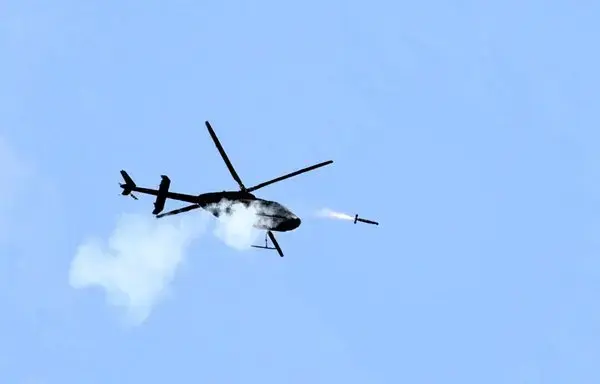The US Navy’s Coyote Launched Effect Short Range (Coyote LE SR) is a flexible, expendable and reusable unmanned aircraft system (UAS) designed for rapid deployment from unmanned surface and underwater vehicles.
Originally known as the Block 3 Coyote, the Coyote LE SR was built to expand intelligence, surveillance and reconnaissance (ISR) capabilities, and also offers versatility to operations in contested or denied environments.
The small jet-powered expendable drone is capable of countering unmanned vehicles, with a non-lethal payload that makes the system recoverable and reusable.
In a key moment in its development, Block 3 successfully defeated a swarm of 10 drones during a July 2021 air intercept test.
Rather than relying on a typical explosive payload, it used non-kinetic means, likely electronic warfare, to neutralize incoming threats without incurring collateral damage.
This could prove incredibly useful for operations in congested environments.
Block 3 was originally conceived to more closely resemble Block 1, featuring a fixed-wing design and electric motor.
The updated form of the Coyote LE SR prioritizes flexibility, as it can be adapted for multiple mission sets, including electronic warfare that soft-kills drones and interferes with communications, kinetic strike capabilities and surveillance.
Layered air defense
The US Army has invested in Coyote technology and plans to acquire about 6,700 Coyote interceptors for its layered air defense systems.
Coyote systems will be incorporated with the mobile-low, slow, small unmanned aircraft integrated defeat system (M-LIDS) and the fixed site-LIDS (FS-LIDS).
The inventory includes 6,000 jet-powered Block 2 Coyotes with radar guidance and 700 Block 3s with their quieter, electric motor and the non-kinetic payload.
The M-LIDS system consists of two specially configured mine-resistant ambush protected all-terrain vehicles (M-ATVs).
One is an electronic warfare vehicle equipped with advanced sensors and communications systems, tasked with detecting and tracking aerial threats; the other is the kinetic defeat vehicle focused on neutralizing drones once detected.
The latter version leverages a Ku-band multi-function radio frequency system (KuMRFS-M) for tracking and detection, the XM914E1 30mm cannon, the M240 7.62mm machine gun, and Coyote Block 2+ system.
When combined, these systems provide multiple ways to detect, deter and defeat UAS threats.
In contrast, the FS-LIDS is a fixed-site system with enhanced Ku-band radar capabilities and state-of-the-art sensors. It can launch multiple Coyote interceptors and be rapidly repositioned to ensure a flexible response.
Across services and platforms, Coyote interceptors prove a powerful counter to evolving unmanned threats.






